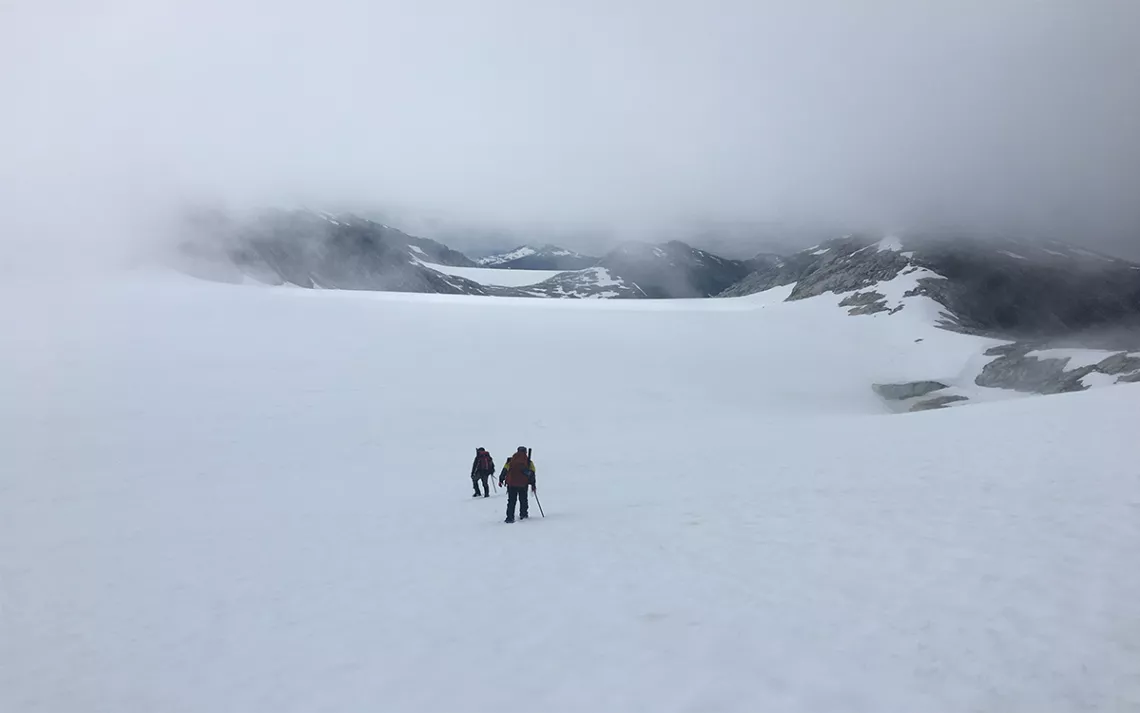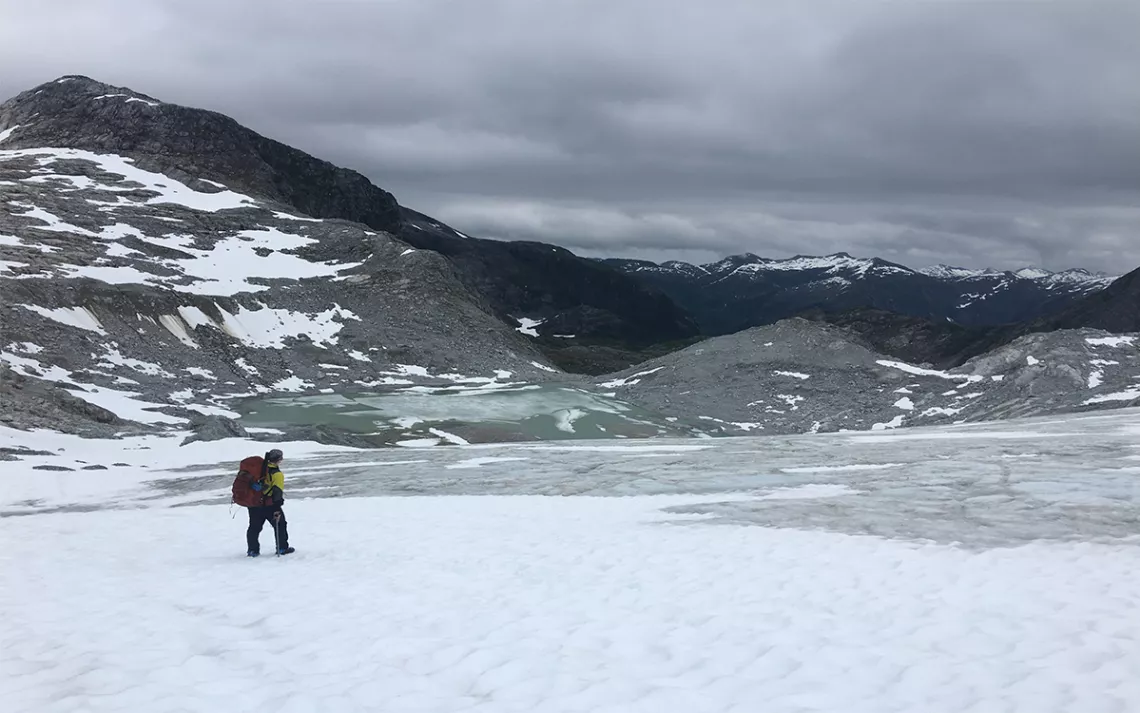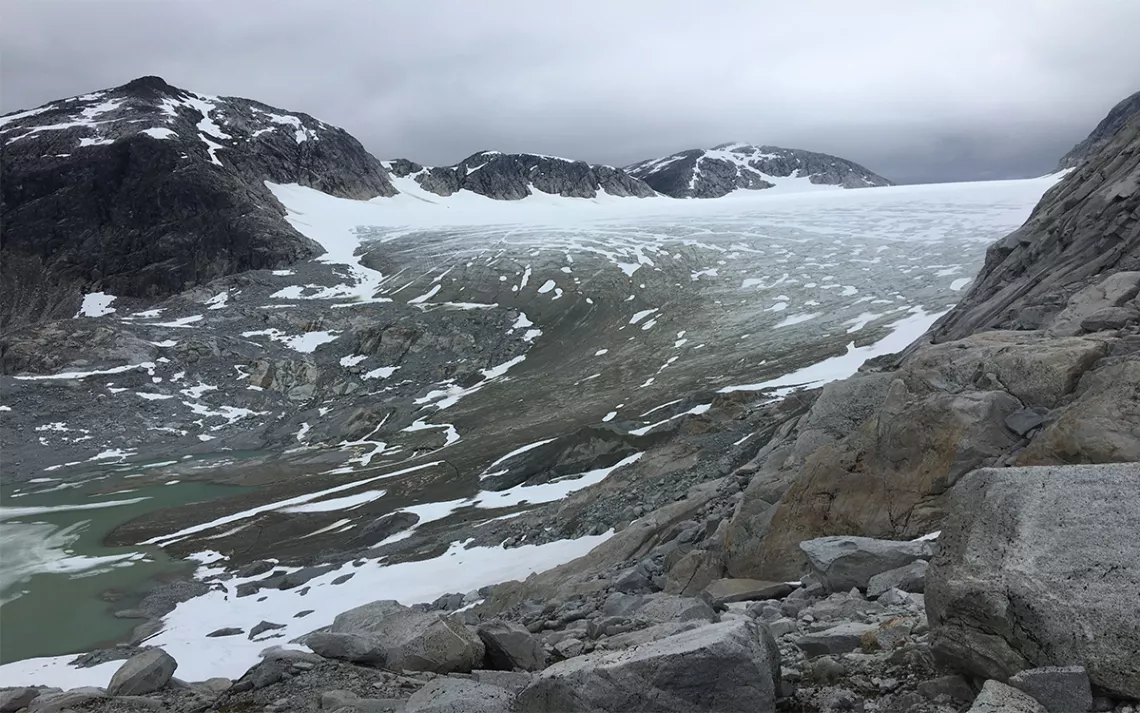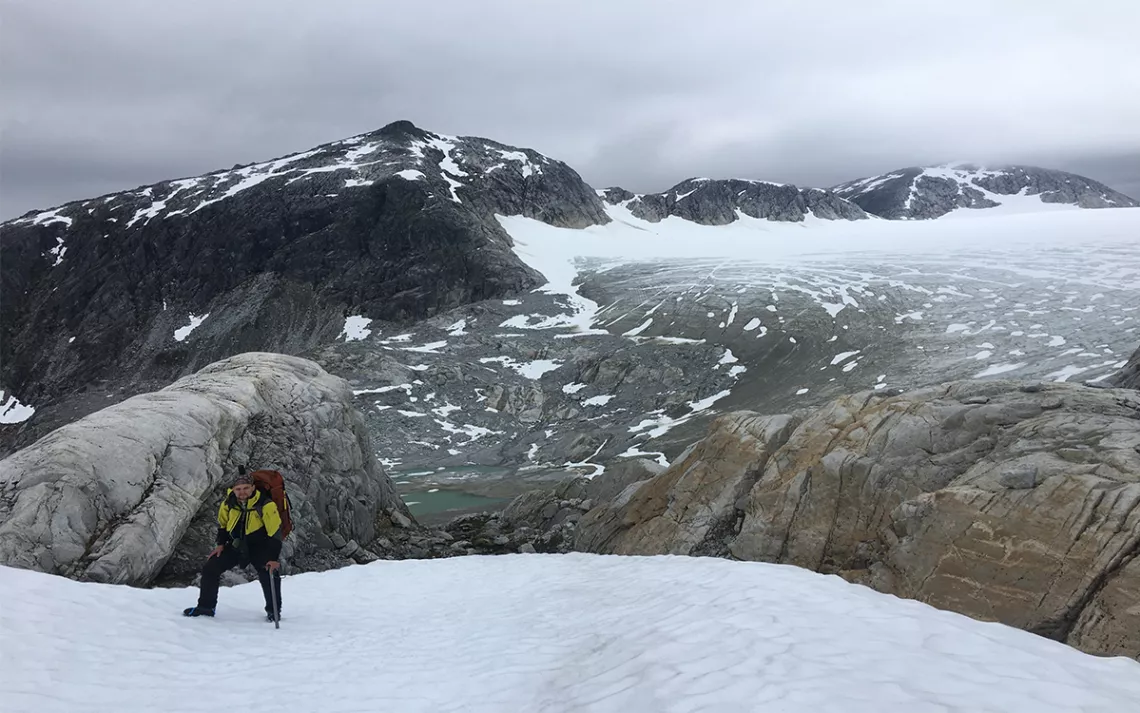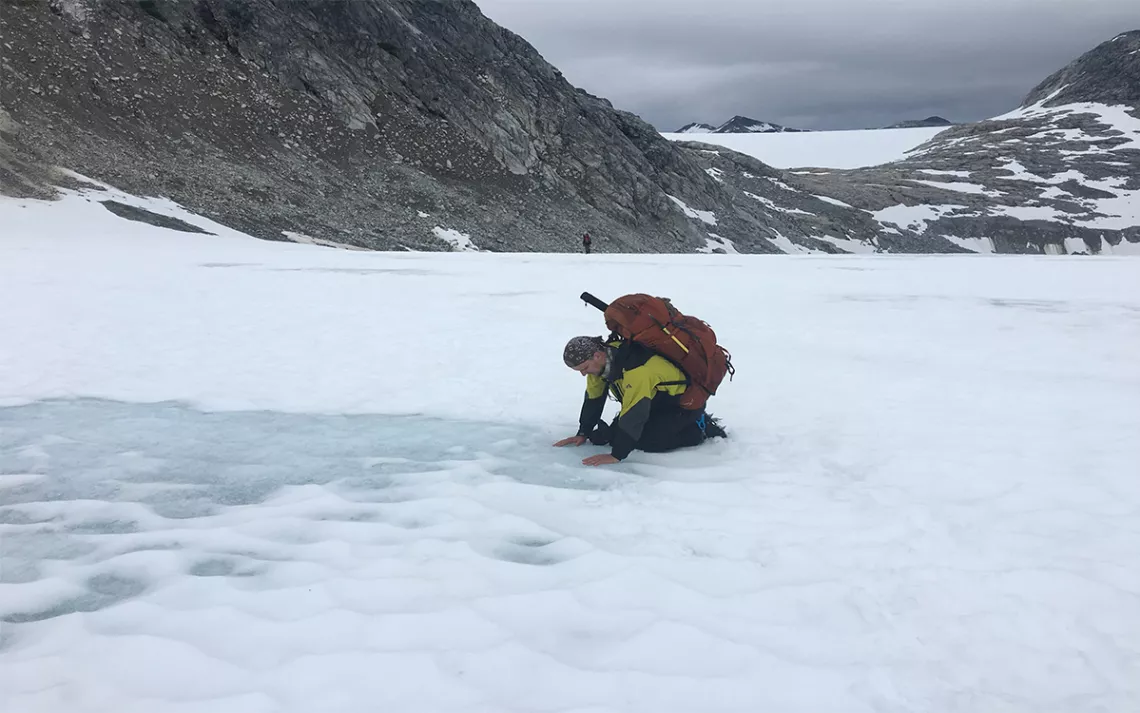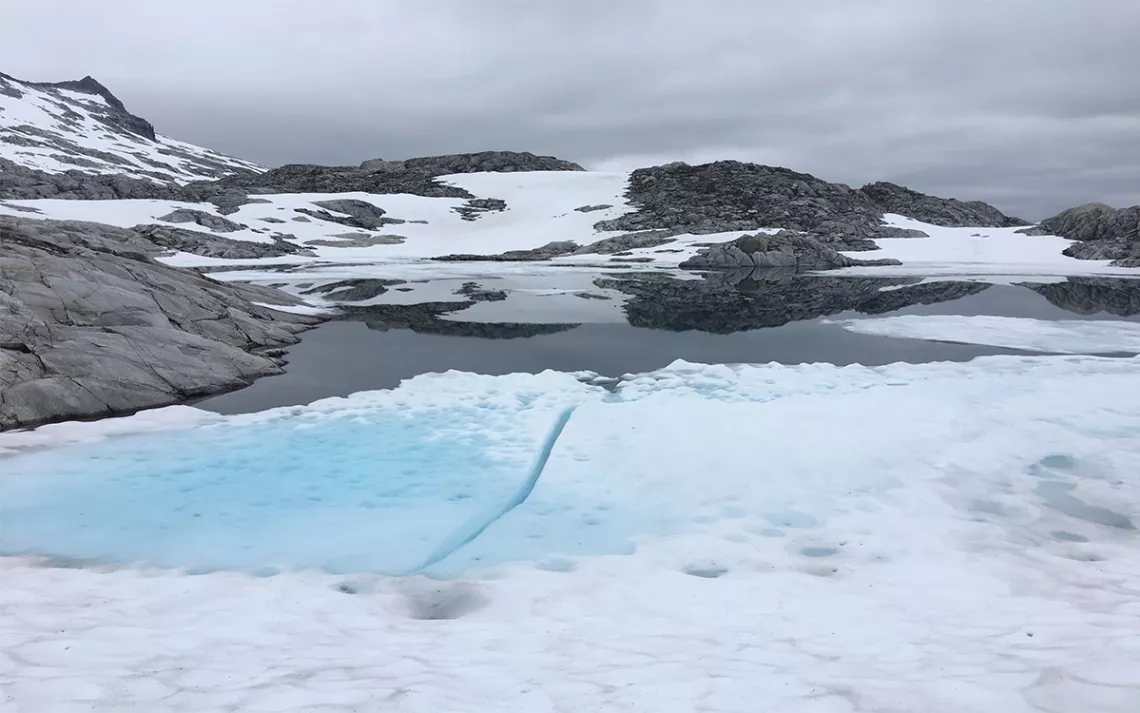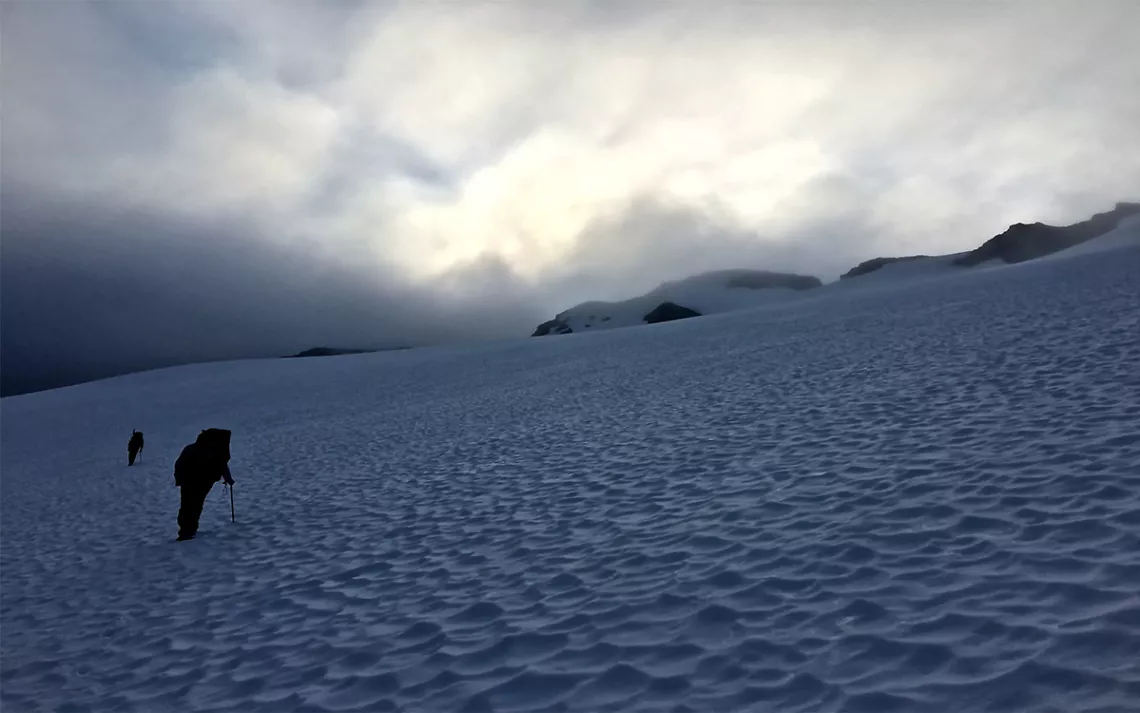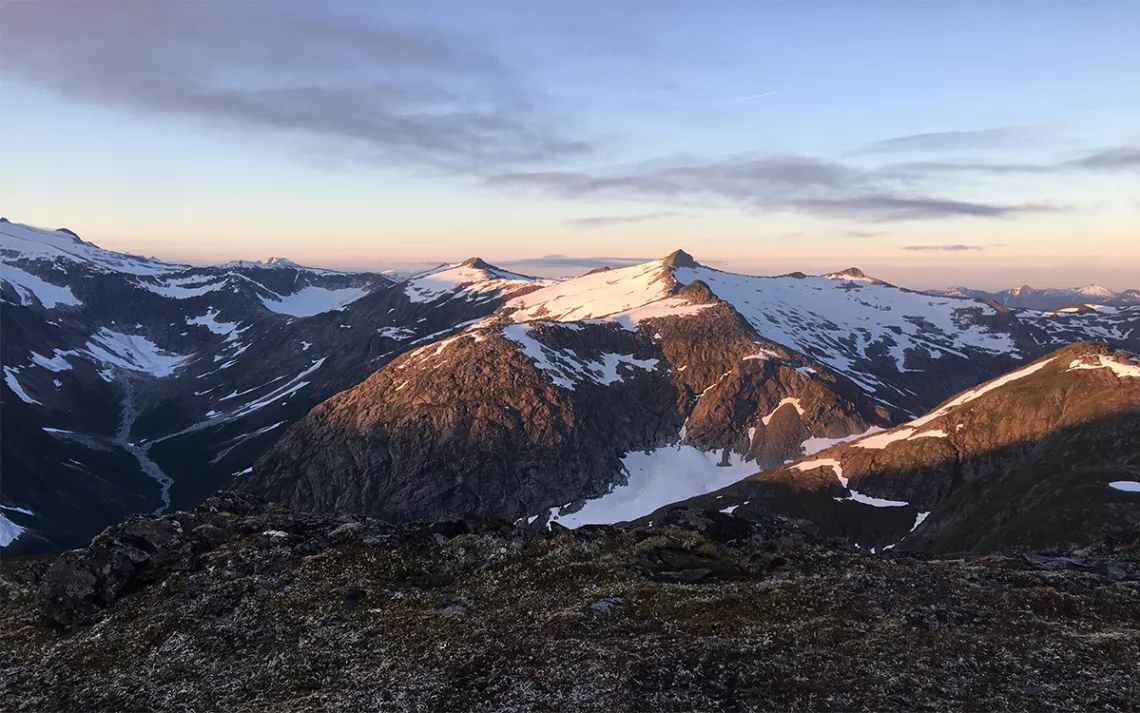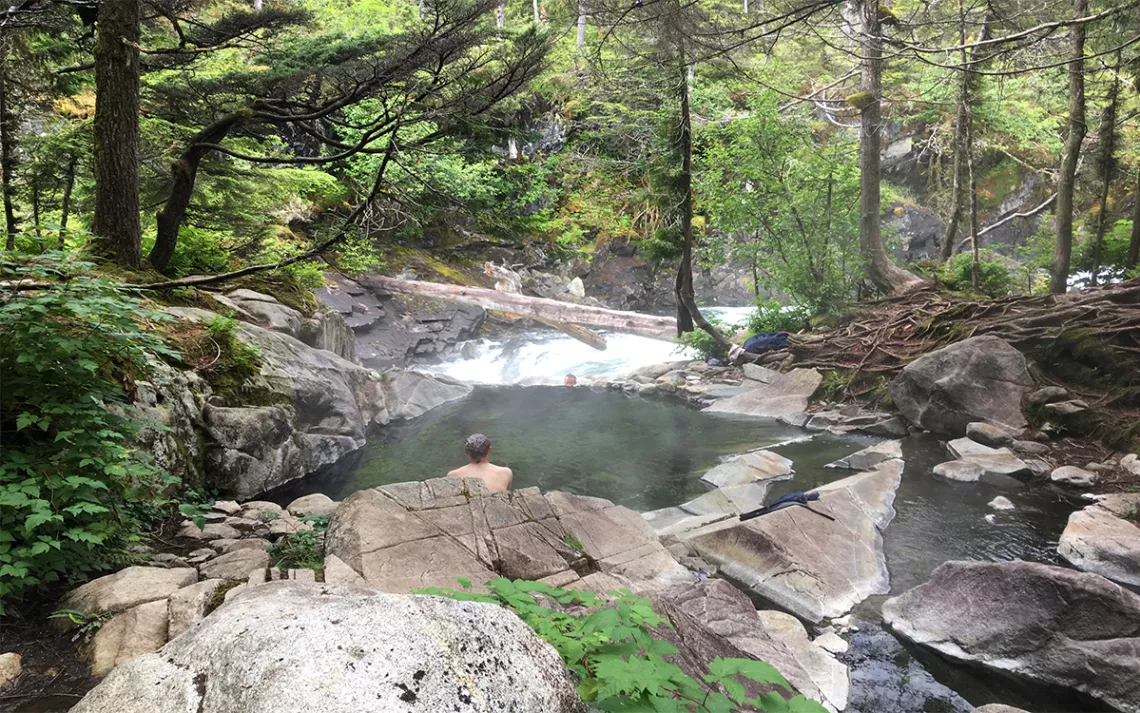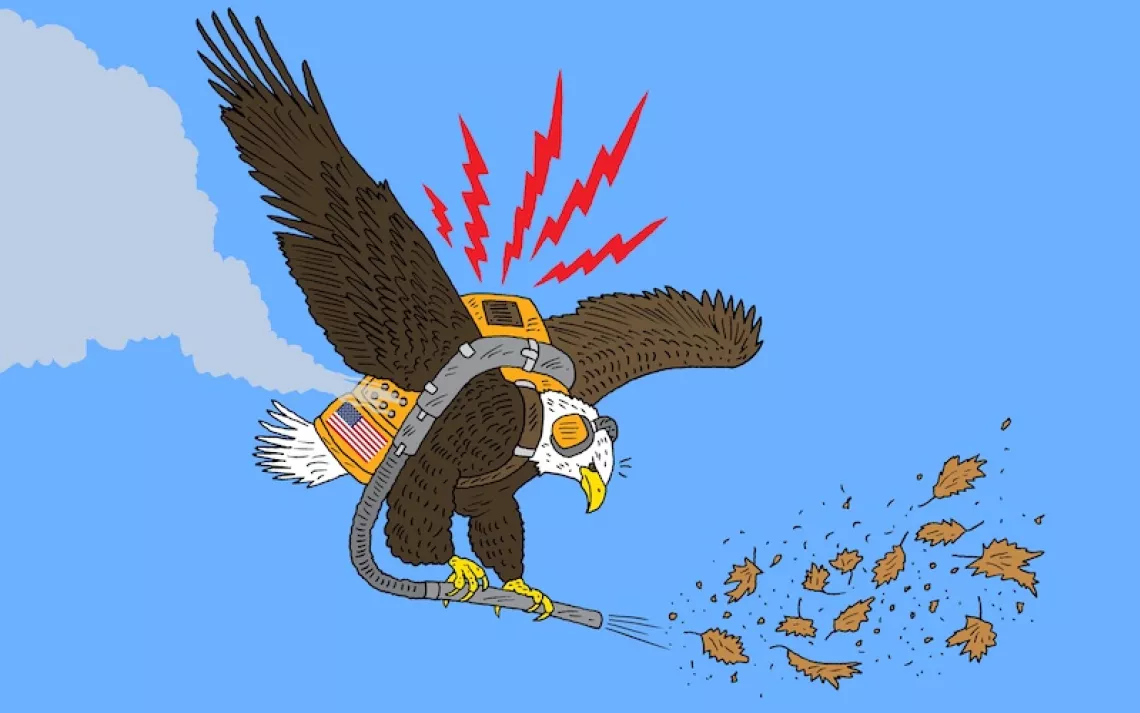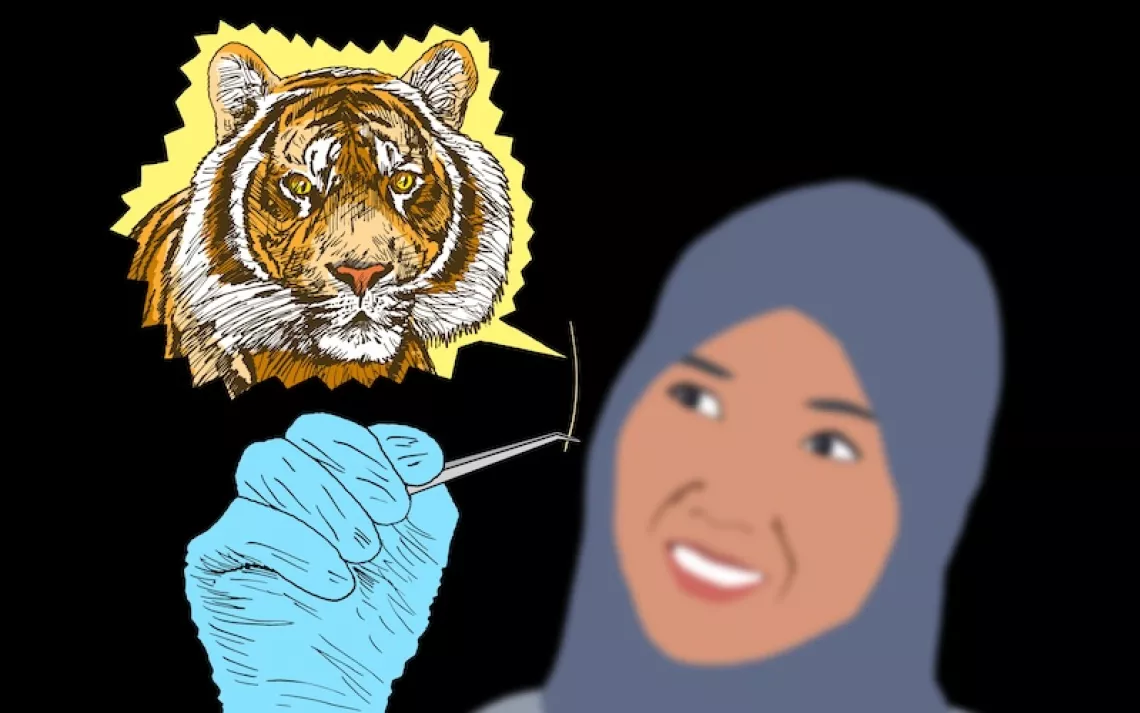Melting Into Alaska’s Thin Air
A glacier expedition across Baranof Island leads to a sad discovery
Photos by Brendan Jones
After the better part of 20 years living on Baranof Island, it seemed about time to check out my backyard, and cross it. I had heard stories of scaling cliffs, traversing ice fields, and crossing pristine glaciers. Along with my friends Danny and Xander, I decided to give the rugged 17-mile hike a shot.
A few weeks before departure, I opened my laptop on the workbench, gear spread out around me, and examined the terrain—in particular, the Mahsa Icefield. Zooming in, I tried to envision where the crevasses would be. Also, what it might feel like to traverse a three-mile field of ice. How cool would it be to cross a glacier, then descend that day to sea level to soak in the waiting pools of Baranof Warm Springs.
A few days before setting out, a friend who had recently finished the same expedition stopped by with a few pointers. She unfolded a topographical map and traced the route with her finger, narrating as she went: the boat ride out Silver Bay to Bear Cove; the hike to Medvejie Lake, around the edge, climbing the valley into the alpine. Scaling the cliffs to Mount Bassie, using blueberry bushes to hoist up. (This, she casually pointed out, was where people generally called for a rescue from the Coast Guard helicopter.) Once you make it into the super alpine, she said, best to side around the mountain at 3,700 feet, avoiding crevasses. Follow the ridgeline for a few miles before dropping into the glacier, which appeared on the map as a lozenge of ice.
She told me that their leader, who had done the crossing seven times and worked for Sitka Search & Rescue, had insisted they rope up. He came by his prudence honestly. On a solo trip across the island, he had tumbled into a crevasse, saving himself with his ice axe.
“You know it’s not like that,” she said, suddenly looking up.
“What?”
“The glacier.”
As she explained—and as we’d later find out—the satellite images, and topo map, didn’t represent the separation and recession of the glacier. Not by a longshot.
But right then, I wasn’t thinking about such things. I was already in the alpine, strapping on crampons, sticking my hand through the tether of the axe, and crossing the ice.
*
If you ask people in Sitka about the Mahsa Icefield, they won’t know what you’re talking about. State legislator Jonathan Kreiss-Tomkins, who worked with a friend on glacier recession and has hiked the island before, questioned whether the name was valid or not. It’s known more commonly as Indigo Glacier, perhaps because it’s near Indigo Lake, or less formally as the Ohio Glacier, after a church group from Ohio (as the story goes) got airlifted by the Coast Guard from the ice field not once but twice.
Whatever the glacier is called, we touched down with our crampons at 2:13 P.M. on July 24, just as the fog rolled in. About 15 minutes before, Danny, a ballet dancer from Colorado, had slipped in the snow. Xander and I watched as he dug the blade of his uphill ice axe into the steep side of the mountain, executing a textbook self-arrest. Suffice to say he was happy to be on (relatively) level ground, crevasses or not. Xander, who had done the hike before, was also content to be on the ice, and regaled us with stories of crossing the glacier 15 years ago.
We had made the smart decision to camp by the ice fields on Mount Bassie the night before, and had been rewarded with a blooming alpine morning, marred only by the sight of my sleeping bag tumbling off the side of the mountain. But that was okay, because if we kept our pace, we’d be in Shangri-La that evening.
The snow was sticky as we set out over the Mahsa. We made easy progress, racing the clouds, watching the snow for any variations in color. Xander explained how we’d make a slight turn to the south before making a graceful exit off the eastern end, up onto a ridge that offered a “wheelchair accessible” alpine game trail.
As we approached the turn, things began to get weird. Rashes of uncovered ice pocked the snow. Danny commented on the constant whir of the wind.
“That’s not wind. That’s running water,” Xander said.
The sun was a flat disc shining through the shifting clouds. Beneath us, jagged boulders and tawny mud reflected the light. The terrain resembled nothing more than an abandoned stone quarry. Standing in my garage, poring over the images, this was not what I had imagined.
Meltwater at the bottom of the expanse had created a lake—silty gray, filled with glacial deposits—with a rock wall behind it. Boulders rolled onto the snow during slides appeared from above like pebbles. The smell of mud and silt played along the breeze.
Danny and I looked on, bewildered. Xander cursed. After a moment we began our trudge downhill, removing our crampons and crawling over the rocks to make lunch. I ran soil between my fingers; it had a crumbly, dry texture. No plant life grew, and hadn’t, presumably, for thousands of years.
All around was the chorus of running water, punctuated by scrapes of ice in the lake, and a few ominous creaks. We slipped a blue enamel cup beneath the stones for water. There was a half-hearted attempt to purify it, then we just drank. It tasted of minerals, heavy and thick. Cold enough to give me a headache.
Xander grew increasingly distraught, drawing parallels between this scraped-over world and some extreme frozen ring of hell. The water boiled, and we ate our freeze-dried eggs in silence, which Xander broke every few minutes by lamenting what was happening to our world. How we had let it happen.
It was time to move on.
Danny and I decided to follow a corridor of snow up to the continuation of the glacier. Xander bouldered. Our crampons were helpful in the loose soil when the snow ran out. The three of us met up, climbing a streambed. Succulents, presumably the first since the last ice age, pushed through the mud. Skeins of purple moss varnished the rocks.
In the second field, on its southern side, you could see crevasses the color of Listerine. We cut a diagonal across, pausing in the middle for a break as Xander performed a rousing rendition of “Copacabana,” using his ice axe as a dancing cane.
By now we understood that the glacier had thinned, and the climb off it was more considerable than Xander had described. He tackled it head on, scrambling straight up. Danny and I located rock that didn’t cascade down along the side of the basin, ascending to a ridge to the alpine trail leading to Warm Springs. As I waited for him, I looked over the glacier and saw that the same thing was happening on the eastern end.
That night we made the decision to camp by a lake, caching our food from bears, tossing our things into the tent, zipping up quickly, and exterminating 20 or so mosquitoes (Alaska state bird, as the joke goes) before turning in. I had no bag; Xander lent me his bivy sack, which was no good because it just got clammy and wet. I finally got tired of shivering and unzipped myself, wandering around the lake at 3 A.M., boiling water for coffee, and staring out over the water for fish rises. There were none.
Descending cliffs on the side of the mountain into Warm Springs, the three of us had our first disagreement, which devolved into snipping. But eventually, the baths, the rushing river and salmonberry bushes, the tsunami of rushing endorphins, and a bit of whiskey absolved all bad feelings, sweeping them away. That night we annexed the public shelter, and were up first thing in the morning for our floatplane out.
*
When I think back on the trip now—those evenings reviewing the satellite imagery, finally setting out, coming across gorgeous views and wildlife along the way, including a handful of brown bears—it seems that something shifted after our lunch on that barren section of glacier. A trip that began as a celebration, full of wonder at one of the last corners of the wild, ended on a muted note. That gash in the glacier had changed it. It had changed us.
As we told Freddie, who ran the Alaska Whale Foundation in Warm Springs and who gave us carrots and apples and salmon while we waited for the plane back home, things were really bad. Sure, you can speak of rising temperatures, greenhouse gases, disappearing ice pack. But until you hear that water, smell the tinny scent of it, experience that swarm of guilt and anger and hopelessness in your head, it won’t keep you up at night. Not in the way this wrecked glacier keeps me up.
One day I’ll do this hike with my daughters. When we arrive at the glacier section, I know there won’t be a three-mile field of ice. Perhaps it will only be rock, scraped over, exposed. Perhaps there will be no ice left at all.
 The Magazine of The Sierra Club
The Magazine of The Sierra Club
